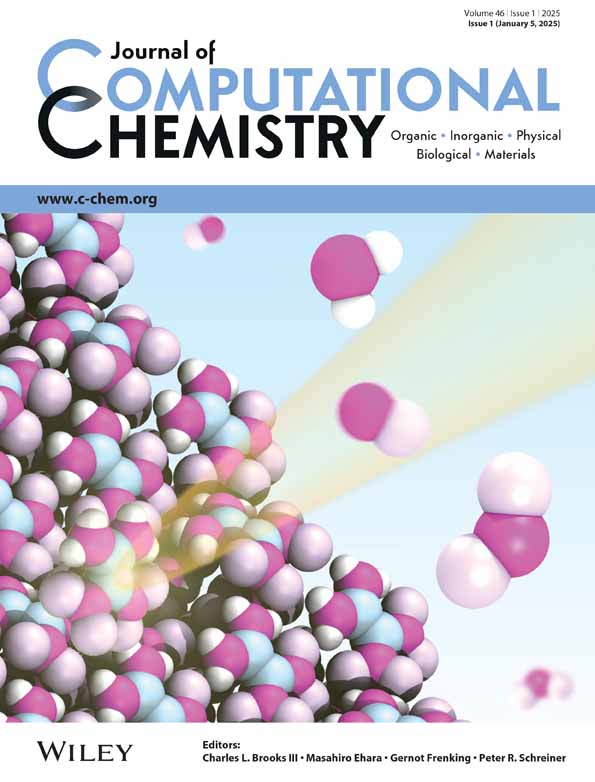Investigation of the complete encapsulation process of the noble gases by cryptophanes
Dedicated to Prof. Tim Clark on the occasion of his 75th birthday.
Abstract
Based on DFT calculations (ωB97XD/def2-SVP/SVPfit), the ability and mechanism of noble gas encapsulation by series of cryptophanes were investigated. The focus was set to study the influence of different functionalization groups placed at the “gates” of cryptophanes cavity entrance by which the energy criteria were chosen as a main indicator for selective encapsulation of noble gases. Chosen functionalization groups were CH3, OCH3, OH, NH2, and Cl, and the encapsulation process of these cryptophanes was compared to a cryptophane without any functionalization group on its outer rim. Those groups were selected based on their different chemical properties and based on their size which will subsequently put additional steric restrictions on the cavity entrance. Chosen functionalization groups, beside their steric influence on the energy barrier magnitude, influence also the gating process through its chemical nature by which they can put an additional stabilization on noble gases encapsulation transition states enhancing the encapsulation process. Objective of this study was clearly to get better insights on the influence of those functional groups on the whole encapsulation process of noble gases. Large-size noble gases (Xe and Rn) from all noble gases are best accommodated in the cavities of selected cryptophanes, on the other hand these noble gases require to pass the highest energy barrier through the gating process. From the series of investigated cryptophanes, the cryptophane with the OCH3 functionalization group has been identified as the one with the best capabilities to host investigated noble gases, but on the other side this cryptophane puts the highest energy criteria required for the previous gating process.
Open Research
DATA AVAILABILITY STATEMENT
The data that support the findings of this study are available on request from the corresponding author. The data are not publicly available due to privacy or ethical restrictions.




